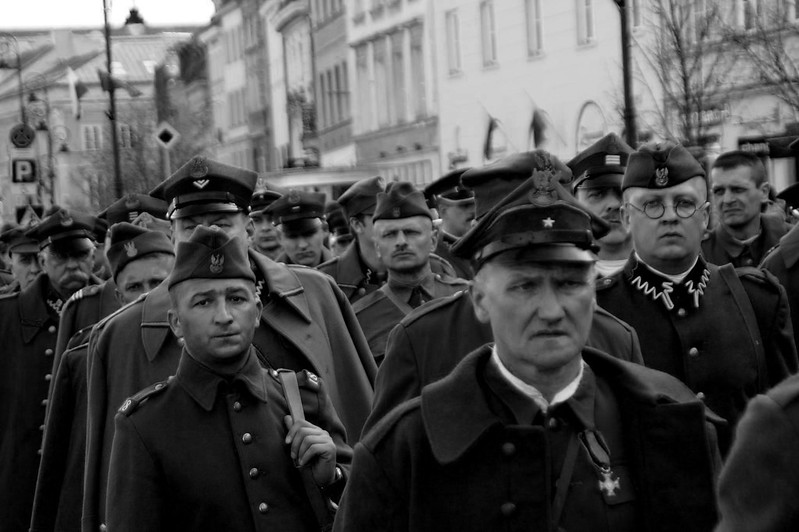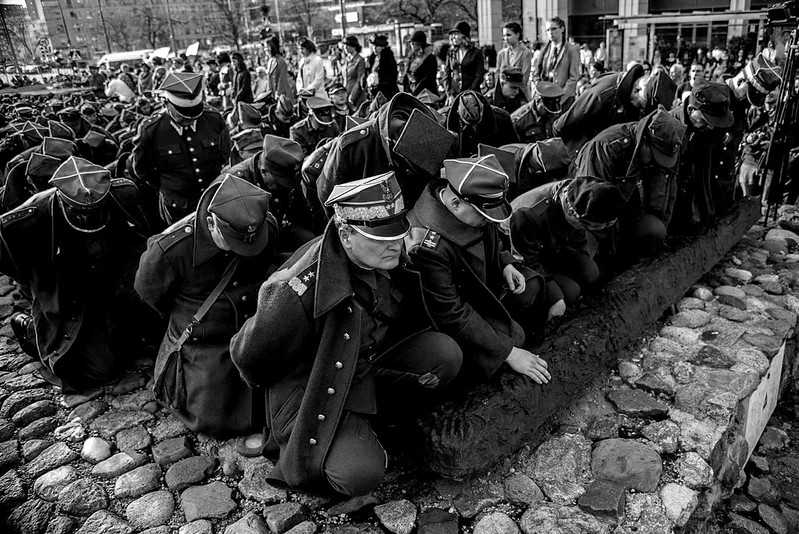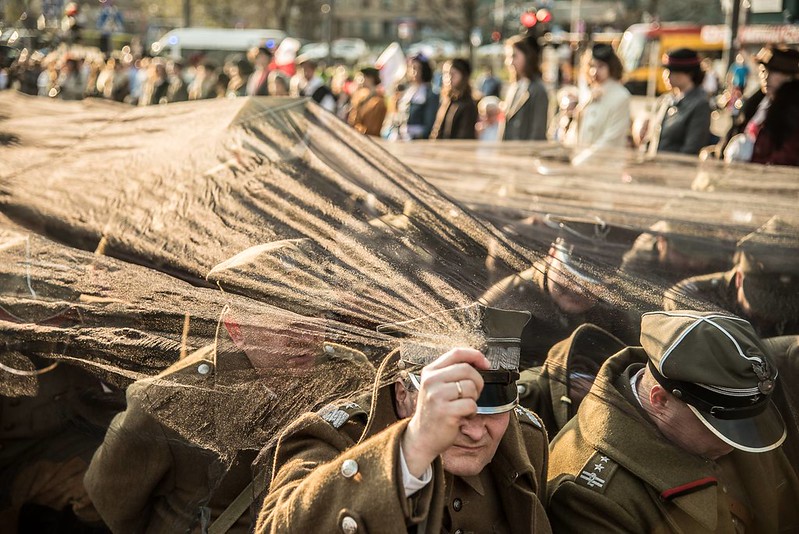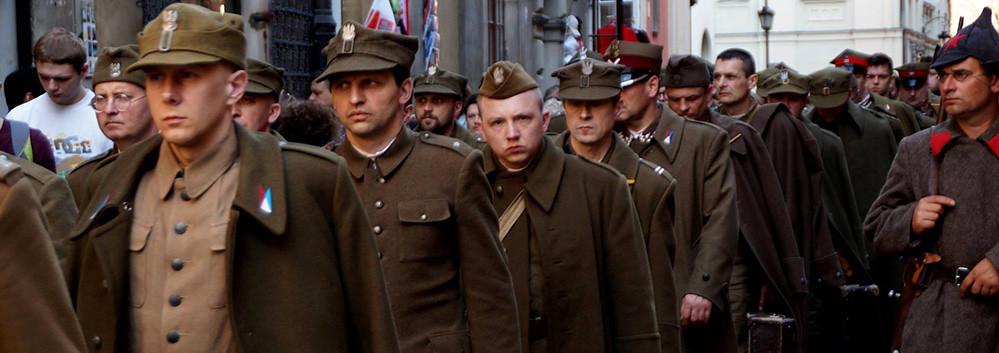The Marches of the Shadows: This is How Poland Remembers the Martyrs of Katyn
In 1940 the Soviet NKVD, following orders of Stalin, assassinated to 22,000 Polish officers in the forest of Katyn. Year after year their compatriots remind them with a startling march.
This initiative, which takes place in early April - the murders were perpetrated in spring - since 2008, is called "Marsze Katyńskie" (Marches of the Shadows). The largest of them, the Marsz Katyński in Warsaw - which took place last Sunday - involved hundreds of reenactors uniformed like officers and chaplains of the Polish Army and also police and some civilians, escorted by other reenactors with uniforms of the Soviet NKVD, the infamous political police of Stalin, executor of the murders. The march run in silence. Polish officials show serious faces. They walk towards death.

Piotr Moos has published in his Facebook an excellent set of photos of the march of Warsaw. The ones I show in this post come from that set. In it we see that as the moment of execution approaches, the Polish officers bow with their hands tied behind their backs:

Shots are heard. The martyrs were killed one by one, shot at the nape of the neck. As they fall, a black veil - representing death - spreads over them:

In this video of Ryszard Jaz we can see the beginning of the march of Warsaw:
In the second part we see the moment the execution, after which the Polish officers quietly sing the Dabrowski's Mazurka, the national anthem of Poland:
I dedicate this post as a memorial to those martyrs.
Cześć i chwała bohaterom!
Honor and glory to the heroes!
|
Don't miss the news and content that interest you. Receive the free daily newsletter in your email: Click here to subscribe |
- Most read
- The 'hole' without civil flights around Paris during the opening of the Olympic Games
- Spain vetoes the Russian frigate 'Shtandart', which intended to reach Vigo, in all its ports
- The interior of the Statue of Liberty torch and the sabotage that canceled its visits
- The ten oldest national flags in the world that are still in use today
- The BNG boasts of the support of a terrorist group and a dictatorship at a public event
- The Russian intelligence document that sparked a hoax about French troops
- A virtual tour of ancient Rome in full color, just as it was in its heyday

 ES
ES





Comentarios:
agusbou2015
I have found this information on Wikipedia about the event (see https://en.m.wikipedia.org/wiki/Katyn_massacre):
«In Poland, the pro-Soviet authorities covered up the matter in accordance with the official Soviet propaganda line, deliberately censoring any sources that might provide information about the crime. Katyn was a forbidden topic in postwar Poland. Censorship in the Polish People’s Republic was a massive undertaking and Katyn was specifically mentioned in the «Black Book of Censorship» used by the authorities to control the media and academia. Not only did government censorship suppress all references to it, but even mentioning the atrocity was dangerous. In the late 1970s, democracy groups like the Workers’ Defence Committee and the Flying University defied the censorship and discussed the massacre, in the face of arrests, beatings, detentions, and ostracism.[80] In 1981, Polish trade union Solidarity erected a memorial with the simple inscription «Katyn, 1940». It was confiscated by the police and replaced with an official monument with the inscription: «To the Polish soldiers—victims of Hitlerite fascism—reposing in the soil of Katyn». Nevertheless, every year on the day of Zaduszki, similar memorial crosses were erected at Powązki Cemetery and numerous other places in Poland, only to be dismantled by the police. Katyn remained a political taboo in the Polish People’s Republic until the fall of the Eastern Bloc in 1989.[23]
In the Soviet Union during the 1950s, the head of KGB, Alexander Shelepin, proposed and carried out the destruction of many documents related to the Katyn massacre in order to minimize the chance that the truth would be revealed.[81][82] His 3 March 1959 note to Nikita Khrushchev, with information about the execution of 21,857 Poles and with the proposal to destroy their personal files, became one of the documents that were preserved and eventually made public.[81][82][83][84][b]».
0:45 | 27/05/17
Opina sobre esta entrada: